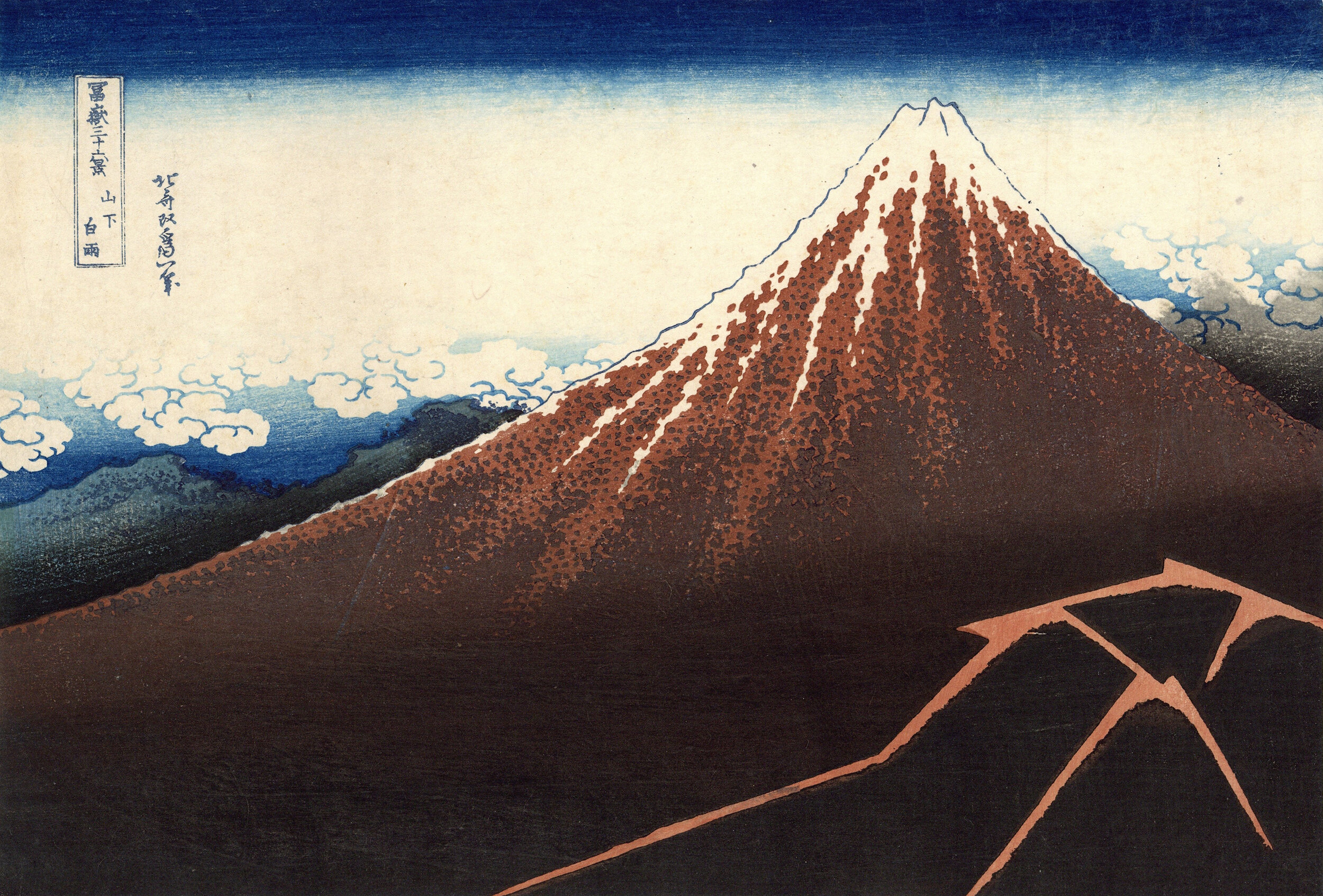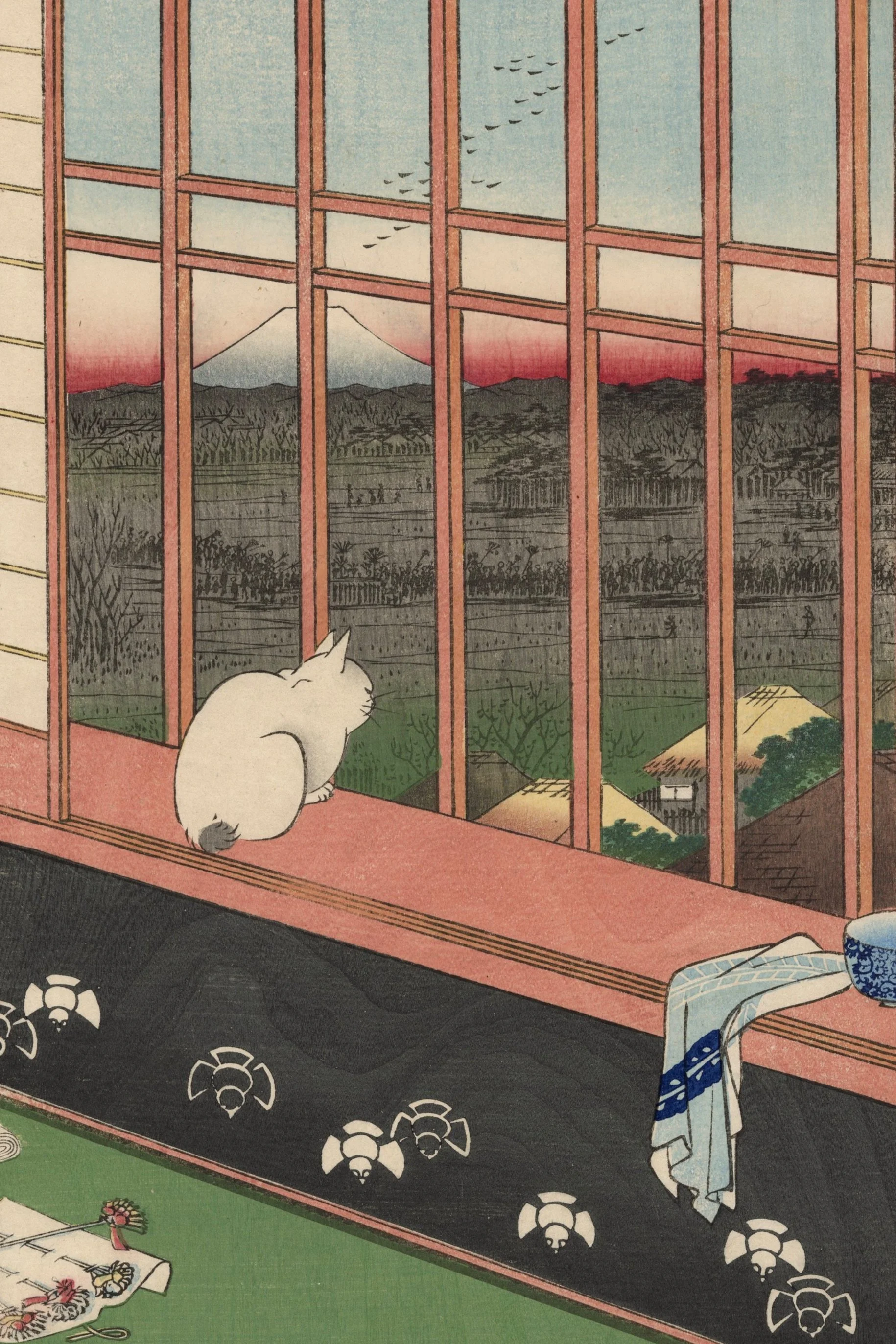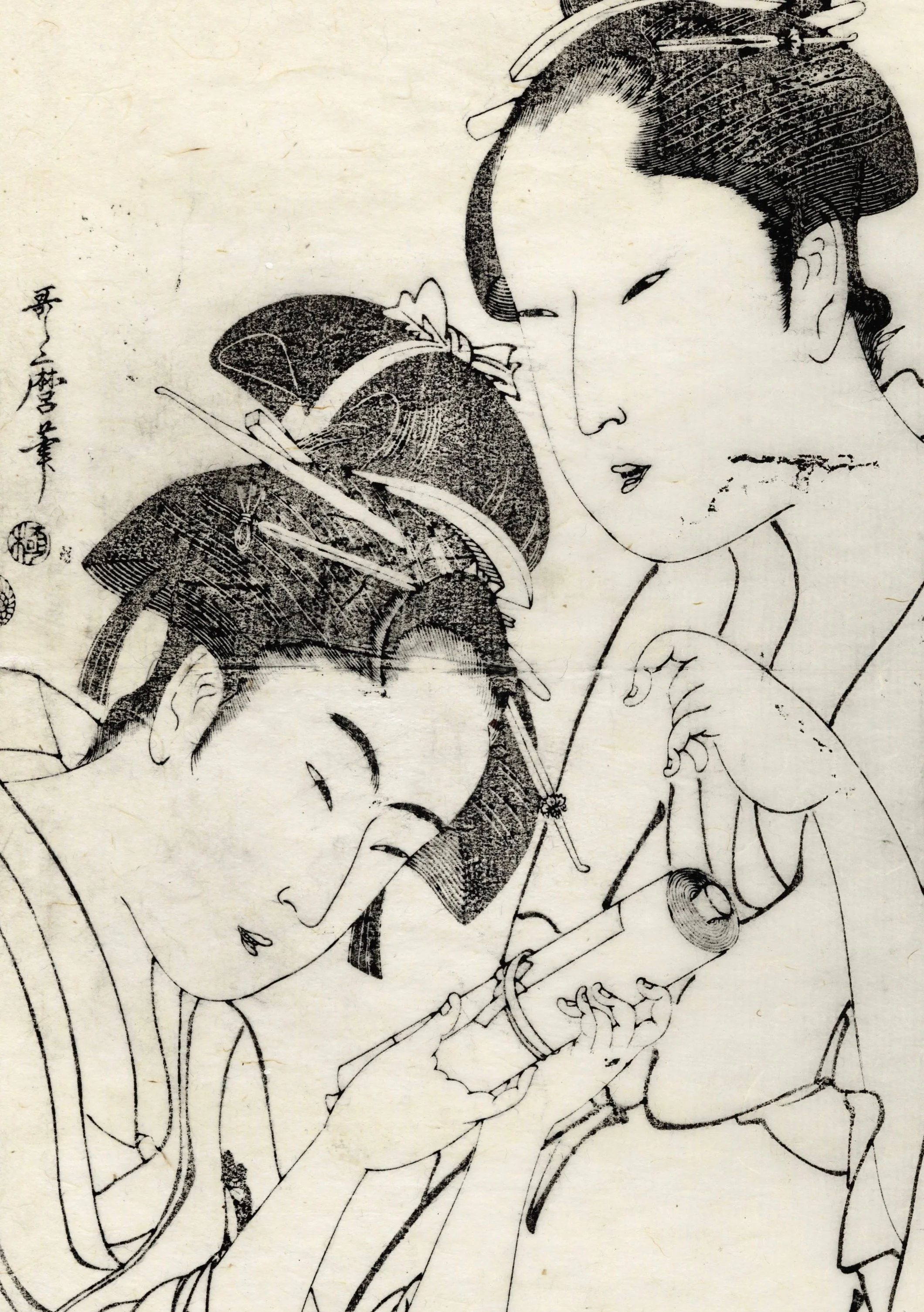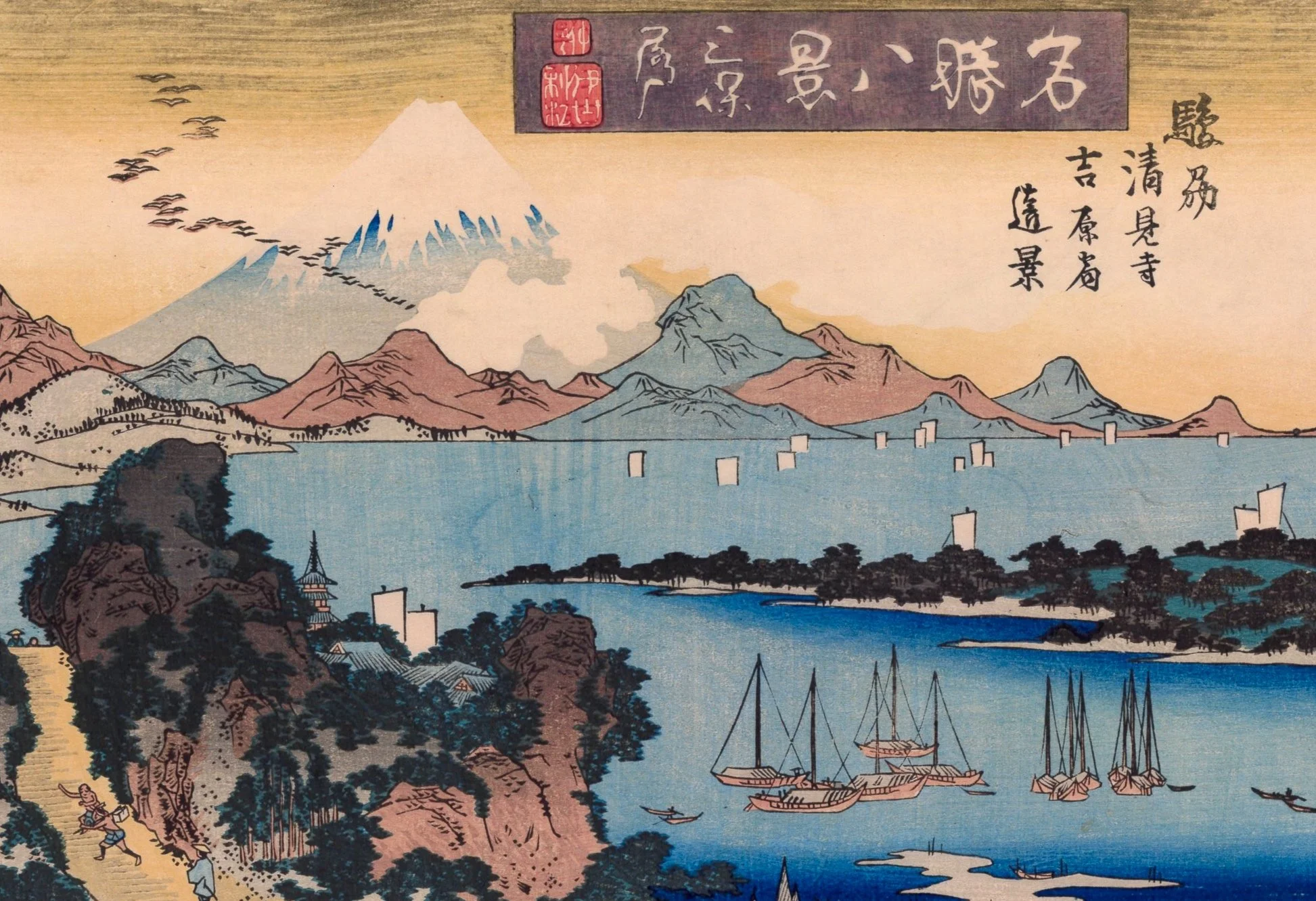
Art of Ukiyoe
Fine Japanese Prints
Masterpieces and rarities, from early Ukiyoe to Shin Hanga, all guaranteed original.
Our Newest
Utagawa Kuniyoshi (1798–1861)
Kong Liang and Song Wan, One of the 108 Heroes of the Popular Water Margin
Featured Print:
No Rules, Just Legends: Kuniyoshi’s Suikoden
For my new featured print, I’m taking a look at Utagawa Kuniyoshi’s “Kong Liang and Song Wan,” from One Hundred and Eight Heroes of the Suikoden. The story behind this series is almost as fascinating as the images themselves.
For Kuniyoshi, this series was a career maker; for warrior prints, a genre-creating blockbuster; and for the tattoo artists of Edo and other towns, a business bonanza.
Let’s start at the beginning.
In China in the first half of the 12th Century, a group of 36 brigands led by a toughie called Song Jiang joined forces in Mount Liang to launch a rebellion, or so the legend goes. They were promptly put down by imperial troops, but their story lived on – in fact, it grew.
They were the focus of a novel called Shui Hu Zhuan(水滸傳) – “Water Margin Chronicles” or “Outlaws of the Marshes.” Their ranks grew to 108 warriors in this telling. These were modern, flawed heroes, or anti-heroes, occasionally committing crimes or letting personal grievances get the best of them. But in time, they used their skills to help the downtrodden, and the idea of these brave outlaws fighting the corrupt government proved irresistible to the masses.
The legend was first introduced to Japan in the late Muromachi period (14th–15th century). By the Edo era it had changed considerably. And while still technically Chinese, many Japanese superimposed the tale atop their own societal challenges.
Enter Kuniyoshi, a young Ukiyoe woodblock print designer with a few illustrated books and warrior triptychs under his belt. In 1828, with the publisher Kagaya, he launched One Hundred and Eight Heroes of the Suikoden -- the Water Margin tale updated. And he didn’t hold back.
While male heroes, usually as portrayed by Kabuki actors, were often delicate and nearly feminine in appearance in early Ukiyoe, Kuniyoshi broke the mold with these upright oban yoko-e designs – muscles bulged and rippled, chest hair and back hair sprouted out of dramatically flung open kimonos and uniforms, and tattoos (horimono) covered entire torsos.
-
In this print – one, alas, without tattoos – margin warriors Song Wan and Kong Liang are portrayed as handsome fair-faced young men with long hair, like two brothers, with eyebrows flying into the temples, eyes wide open, and sinewy, strong bodies. Their intricately designed garments flow dramatically with movement.
They have snuck onto the wall of Peking Castle and seem to be lighting bamboo beacons for signaling. Although the image, clothing and even behavior of the characters are very different from the original "Water Margin", they are still vivid, three-dimensional and full of energy.
The public went mad for this series, and the masculine narrative it told in a colorful new way. Warrior prints were an Ukiyoe staple from then on, and Kuniyoshi’s future was assured. He returned to the theme again – including this wonderful design featuring a magnificent tattoo.
And tattoo artists? They were inundated with customers who wanted to bring Ukiyoe to life on their own bodies, including firemen, carpenters, and other professionals.
In fact, according to the scholar Rossella Menegazzo in the wonderful book Kuniyoshi (Skira; 2018), the famed tattoo artist Aka Horihide in Yokusuka used Kuniyoshi and Hokusai prints as references right up until his death in 2017.
“If you want to become a good horishi (tattoo master),” he said, “you cannot but study the works of these masters.”
From 12th Century China to the arm of some teenager just south of Tokyo today. What a journey. But that’s Ukiyoe for you.
Sharon
Please mail, phone, Wechat or WhatsApp me. I'm happy to answer any questions. I’m also happy to send additional photographs.
This is only a limited selection of our prints.
To see more, please contact me.
如果您有兴趣购买版画,请通过邮件、电话、微信或WhatsApp与我联系,我将非常乐意回答任何相关品相问题。
本网站仅展示我部分藏品,如想欣赏更多画作,请与我联系。
How to Purchase
Learn more about payment and shipping, please click Here












